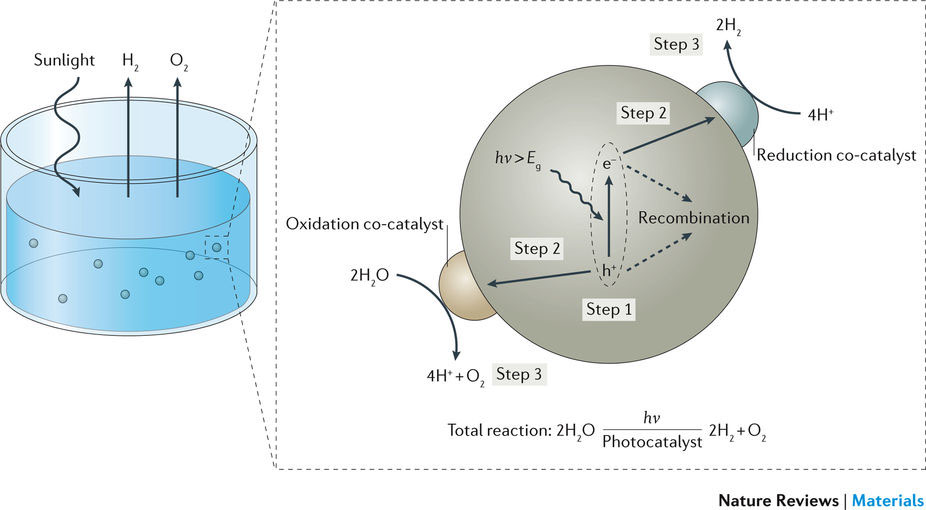完全水分解のための粒子状光触媒
Particulate photocatalysts for overall water splitting
2017年8月1日 Nature Reviews Materials 2 : 17050 doi: 10.1038/natrevmats.2017.50

太陽エネルギーを化学エネルギーに変換することは、再生可能エネルギーを生成する有望な方法である。半導体光触媒上での水分解による水素生成は、太陽光を利用して水素を大量合成する簡便で費用効率的な手法である。本多-藤嶋効果が発見されてから、この分野は大きく進歩し、数多くの光触媒材料と水分解システムが開発された。本Reviewでは、粒子状光触媒を用いる既存の水分解システムの概要を、主要構成要素である光捕集半導体と助触媒に注目して説明する。また、1段階および2段階光励起型完全水分解システムに用いられる材料の基本設計原理についても、光吸収、電荷移動、表面触媒反応という3つの素過程に重点を置いて論じる。最後に、将来の商業用途に向けた粒子状光触媒による太陽光水分解に伴う課題と進展の見込みについて概説する。
Corresponding Author
The conversion of solar energy to chemical energy is a promising way of generating renewable energy. Hydrogen production by means of water splitting over semiconductor photocatalysts is a simple, cost-effective approach to large-scale solar hydrogen synthesis. Since the discovery of the Honda–Fujishima effect, considerable progress has been made in this field, and numerous photocatalytic materials and water-splitting systems have been developed. In this Review, we summarize existing water-splitting systems based on particulate photocatalysts, focusing on the main components: light-harvesting semiconductors and co-catalysts. The essential design principles of the materials employed for overall water-splitting systems based on one-step and two-step photoexcitation are also discussed, concentrating on three elementary processes: photoabsorption, charge transfer and surface catalytic reactions. Finally, we outline challenges and potential advances associated with solar water splitting by particulate photocatalysts for future commercial applications.

